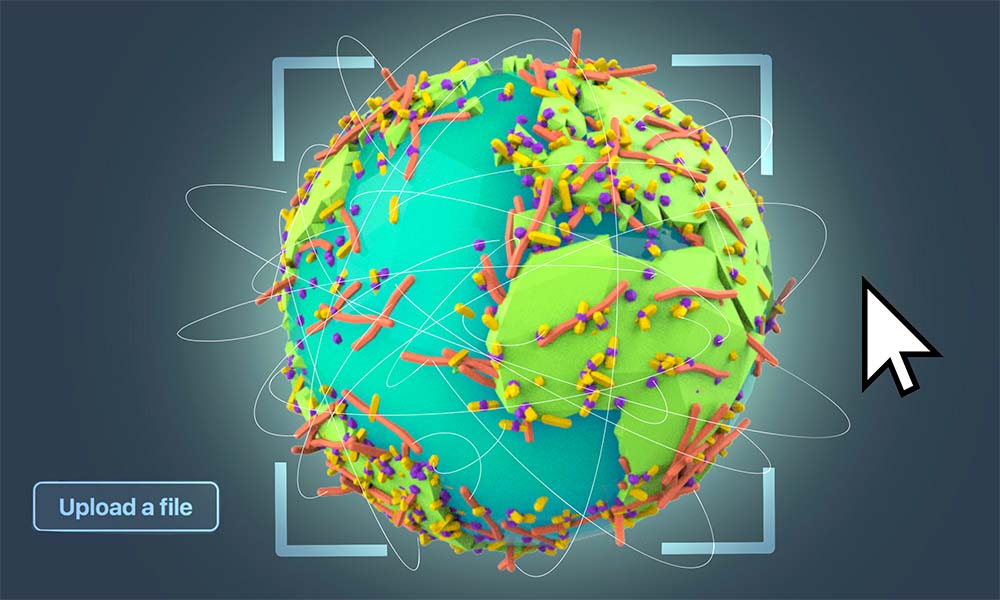Towards the biogeography of prokaryotic genes.
Nature 15 December 2021
10.1038/s41586-021-04233-4
Understanding bacterial ecosystem connections made easier with new gene database

Around the world, bacterial communities live in all kinds of habitats, from the human body to water and soil. Each community consists of a unique composition of species, called the microbiome. Each species harbours thousands of genes that encode both common functions and functions specific to the habitat. Scientists around the world have started to sequence microbiomes in individual habitats to understand the functional diversity of bacteria within them. However, little is known about where these habitat-specific genes and functionalities originate, whether they can cross environments, and how easily they can spread.
To answer such questions and to enable more such research, the group of Peer Bork in collaboration with Jaime Huerta-Cepas, formerly a scientist at EMBL Heidelberg and currently a group leader at the Centre for Plant Genomics and Biotechnology of Madrid (CBGP UPM-INIA/CSIC), has launched the Global Microbial Gene Catalog. This database, created using publicly available data, contains more than 2 billion genes, 303 million of them dubbed unigenes. A unigene is a DNA sequence that scientists use during data analysis to represent a group of multiple almost-identical gene sequences that come from the same microbial species. These unigenes have been identified from 14 different environments, including human and animal bodies, as well as soil and water from different geographical locations. The resource aims to help the scientific community study various aspects of microbial planetary biology, such as similarities and differences between microbiomes found in distant locations or facing different environmental conditions.
“This is a starting point for looking at the entire life of the planet and not only in specific habitats with their individual biases,” said Professor Peer Bork.
“Thanks to the methodological advances made in the Bork Group, we created a resource to analyse microbial metagenomes at the global scale,” said Professor Luis Pedro Coelho, who conducted this work as a postdoc in the Bork Group, and currently is a professor at the Fudan University in Shanghai.
By having a closer look at the unigenes in the database, the scientists saw that only a few unigenes and microbial species could be found across habitats. Some of these exceptional unigenes are related to antibiotic resistance, and some are known to have the ability to move around the genome, or even cross from one species to another.
Next, the scientists grouped the unigenes in the database based on their similarity and found that most of them belong to a relatively small number of families of related genes. This means that presumably most microbial genes on Earth evolved through the modification of a few existing genes rather than emerging from scratch.
“We expected to see more genetic variety, resulting from adaptation to different habitats. However, with the data, we could show that this variety mostly appeared by pure chance without conferring a benefit to the organism,” said Professor Coelho. “This implies that new genes emerge and existing ones disappear at a fast pace, with new strains being formed all the time. Hence, we might be able to sequence all microbial species on Earth, but not all their strains.”
This planetary approach represents a shift in how scientists think about microbiomes. Although microbiomes in individual environments have their own peculiarities, they might also exchange useful functions across habitats. “Instead of looking at microbes in isolated spots, we should look at them globally, because they are all connected,” said Professor Coelho. For example, antibiotic-resistant bacteria excreted by a cow might live in the soil and then hop onto the plants we eat. Understanding how bacteria and genes cross from one environment to another is therefore critical for human and planetary health.
In the future, the scientists plan to expand the database and use it for studying the evolution and dispersal of genes and microbes at a much more fine-grained scale. For example, by analysing historical microbiome data collected over the last decade, they can investigate, for example, how different kinds of genes related to antimicrobial resistance spread geographically.
“The overall collection of data will be useful for researchers in many ways. Our results illustrate the power of holistic approaches, including analysing samples from diverse environments to fully understand microbial diversity,” said Professor Bork. “For example, finding the same antibiotic resistance genes in different habitats that are far, far apart implies a rapid spread of antimicrobial resistance, but could also provide means to help us understand this complex issue in new ways.”
Nature 15 December 2021
10.1038/s41586-021-04233-4